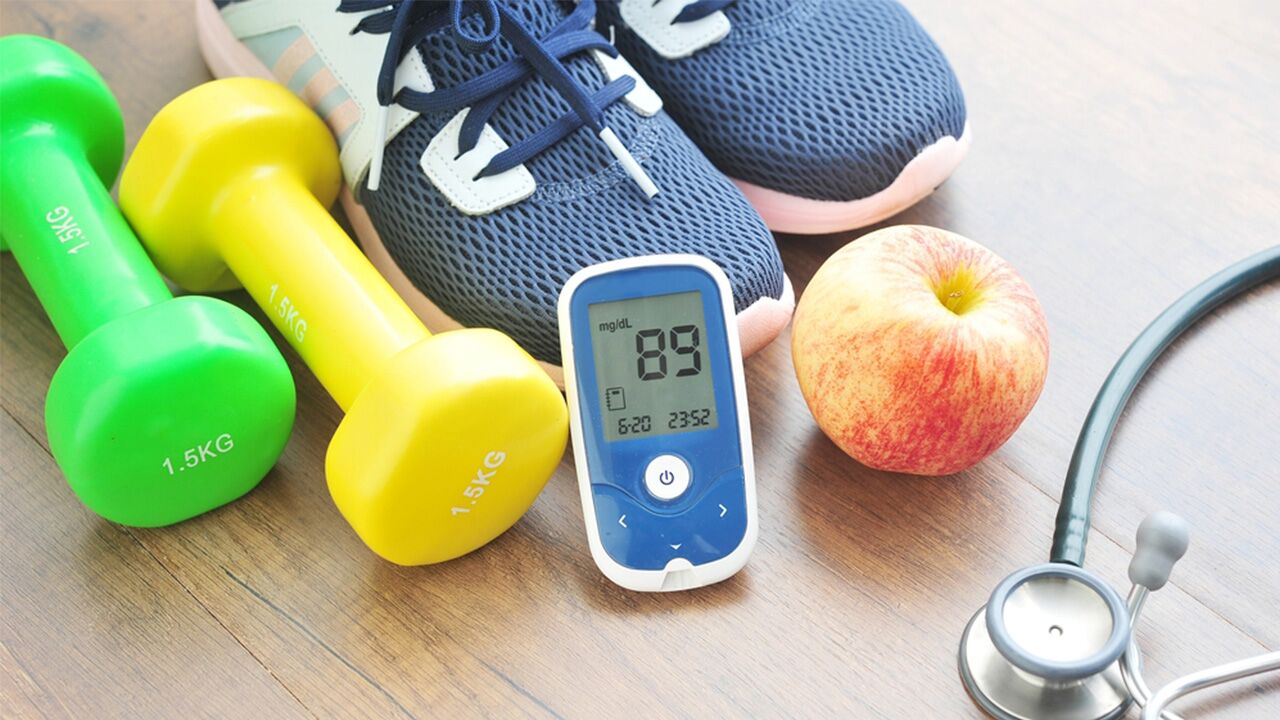Type 1 Diabetes: When the Pancreas Is Under Attack
 By: by Amino Science
By: by Amino Science

Type 1 diabetes mellitus, or type 1 diabetes for short, affects approximately 1.25 million people in the United States, or around 4% of Americans diagnosed with diabetes. Like type 2 diabetes, type 1 diabetes can lead to a whole host of negative consequences, especially if it’s poorly controlled. However, the two types don’t share the same cause. In this article, we’re going to take a look at what causes type 1 diabetes, how to tell if you might have it, and what to do if you’re diagnosed.
Types of Diabetes
As mentioned, there are two types of diabetes: type 1 and type 2. Type 2 is by far the more common type and occurs when a person develops insulin resistance—a condition that results when the body doesn’t use insulin properly.
When resistance becomes an issue, the pancreas—which is responsible for regulating blood sugar levels—tries to compensate by making more and more insulin, but over time it becomes overwhelmed and can no longer keep blood glucose levels balanced. In its early stages, type 2 diabetes can be managed, and even reversed, with dietary changes and exercise. However, in its more advanced stages, medications and insulin are generally required.
By contrast, type 1 diabetes is an autoimmune disease that arises when the immune system attacks islet cells in the pancreas called beta cells, mistaking the healthy insulin-producing cells for foreign invaders like bacteria or viruses. If the immune system destroys enough of these cells, the pancreas can eventually lose its ability to produce insulin altogether.
If you’re a member of a certain generation, you probably remember that type 1 diabetes was once referred to as juvenile diabetes. However, even though it is more commonly diagnosed in childhood, the condition can develop at any age. Likewise, type 2 diabetes was once known as adult-onset diabetes, but childhood obesity has led to more and more children being diagnosed with the illness, so the term is no longer used.
Why Is Insulin So Important?
Glucose is a type of sugar that the body’s cells use as their main source of energy. But to be used by the cells, glucose first has to have insulin to get across the cell walls. If the body becomes resistant to the effects of insulin or the pancreas loses its beta cells or begins to malfunction and can no longer keep up with the body’s demands, sugar can’t get into the cells and instead builds up in the bloodstream. And this can lead to a variety of health problems.
Risk Factors for Type 1 Diabetes
A number of factors can increase a person’s risk of developing type 1 diabetes. These include:
- Family history: People with a family history of type 1 diabetes have a greater risk of developing the condition.
- Age: Children between the ages of 4 and 7 and 10 and 14 are at greater risk of type 1 diabetes.
- Genetics: People with certain genes have a higher risk of developing type 1 diabetes.
- Geography: Interestingly, people who live farther away from the equator have a greater risk of developing type 1 diabetes.
Symptoms of Type 1 Diabetes
It’s not uncommon for the symptoms of type 1 diabetes to appear quite suddenly. Symptoms to watch out for include:
- Increased thirst
- Frequent urination
- Fruity breath
- Extreme hunger
- Weight loss
- Fatigue
- Weakness
- Blurred vision
- Nausea
- Vomiting
- Irritability and other mood changes
- Yeast infections (women and girls)
Complications of Type 1 Diabetes
Like type 2 diabetes, type 1 diabetes can result in profound and life-threatening complications affecting a variety of organ systems. Some of the conditions associated with this disease are:
- Heart disease: Type 1 diabetes dramatically increases the risk of various heart problems, including coronary artery disease, heart attack, stroke, and high blood pressure.
- Neuropathy: Elevated blood sugar levels can lead to nerve damage by damaging the walls of the tiny blood vessels (capillaries) that feed nerves. This can result in tingling, numbness, burning, pain, and eventual loss of sensation in the affected area.
- Nephropathy: Type 1 diabetes can damage the filtering system of the kidneys, which may lead to end-stage kidney disease, dialysis, or kidney transplant.
- Retinopathy: Type 1 diabetes can damage the blood vessels of the retina and lead to blindness. Uncontrolled blood sugar levels are also associated with a greater risk of developing cataracts.
Diagnosing Type 1 Diabetes
If your health care provider suspects type 1 diabetes, they’ll order blood tests to check markers for the disease. Common tests used to diagnose type 1 diabetes include:
- Glycosylated hemoglobin (A1c): This test measures the body’s average blood sugar level over the previous 2 or 3 months by testing the percentage of blood sugar attached to hemoglobin. A higher percentage indicates that blood sugar has been elevated.
- Random blood sugar: As the name suggests, a random blood sugar can be performed at any time of the day. A level greater than 200 milligrams per deciliter is suggestive of diabetes, regardless of when the last meal was eaten.
- Fasting blood sugar: This test is performed after fasting overnight. A level between 100 and 125 milligrams per deciliter indicates prediabetes, while two or more readings of 126 or higher confirm the diagnosis of diabetes.
Treating Type 1 Diabetes
If you’ve been diagnosed with type 1 diabetes, your treatment plan will consist of the following:
- Regular monitoring of blood sugar levels
- Insulin administration
- Dietary modifications
- Carbohydrate, fat, and protein tracking
- Regular physical activity
- Healthy weight maintenance
Unfortunately, because type 1 diabetes destroys the ability of the pancreas to produce insulin, people with the disease will need to take supplemental insulin for the rest of their lives. The different types of insulin that may be prescribed are:
- Regular
- Fast-acting
- Intermediate-acting
- Long-acting
Moreover, insulin can’t be taken orally because the same enzymes that digest food also break down insulin, rendering it inactive. Therefore, people with type 1 diabetes must administer insulin using either an insulin pump, which is a wearable device that automatically dispenses insulin, or injections.
While an insulin pump can be programmed to dispense specific amounts of rapid-acting insulin at regular intervals, people who choose insulin injections usually require a variety of insulin types, administered multiple times throughout the day.
In addition, the Food and Drug Administration (FDA) recently approved the first artificial pancreas device system for the treatment of type 1 diabetes. This device works by automatically adjusting the amount of insulin entering the body based on glucose levels measured by a sensor.
Amino Acids
Amino acids are known as the building blocks of life because they’re essential for the creation of protein and other chemicals the body requires for proper functioning. And new research is beginning to shed light on the role these important substances may play in the development of type 1 diabetes.
For example, a 2013 study published in the journal Nutrition and Diabetes found that children who develop type 1 diabetes during the first 6 years of life exhibit low levels of the amino acid carnitine as infants.
These findings suggest that neonatal screening for amino acid deficiencies may be beneficial in children at risk of type 1 diabetes, and that carnitine supplementation may be helpful for those found to be lacking in this important amino acid. However, it’s important to remember that amino acids work in concert with one another, so look for a formula that supplies a balanced mixture of all essential amino acids, and be sure to speak with your health care provider before beginning an amino acid regimen.
Type 1 diabetes is a serious illness that can lead to a number of potentially debilitating or life-threatening conditions. However, with appropriate diabetes care, including a healthy diet, social support, and avoidance of both high and low blood sugar levels, it’s possible to reduce your risk of health problems and lead a long and productive life. So if you or someone you love is experiencing worrisome symptoms, don’t hesitate to speak with your health care provider right away.


Up to 25% off Amino
Shop NowTAGS: conditions
Join the Community
Comments (0)
Most Craveable Recipes




 833-264-6620
833-264-6620



















